Milkweeds (Asclepias spp.) are fascinating plants.
To our eyes, they produce masses of pretty flowers, and to caterpillars and other larvae, they look like a fabulous meal.
To other creatures, the milky latex is a warning to stay away or suffer the consequences of a toxic mouthful.
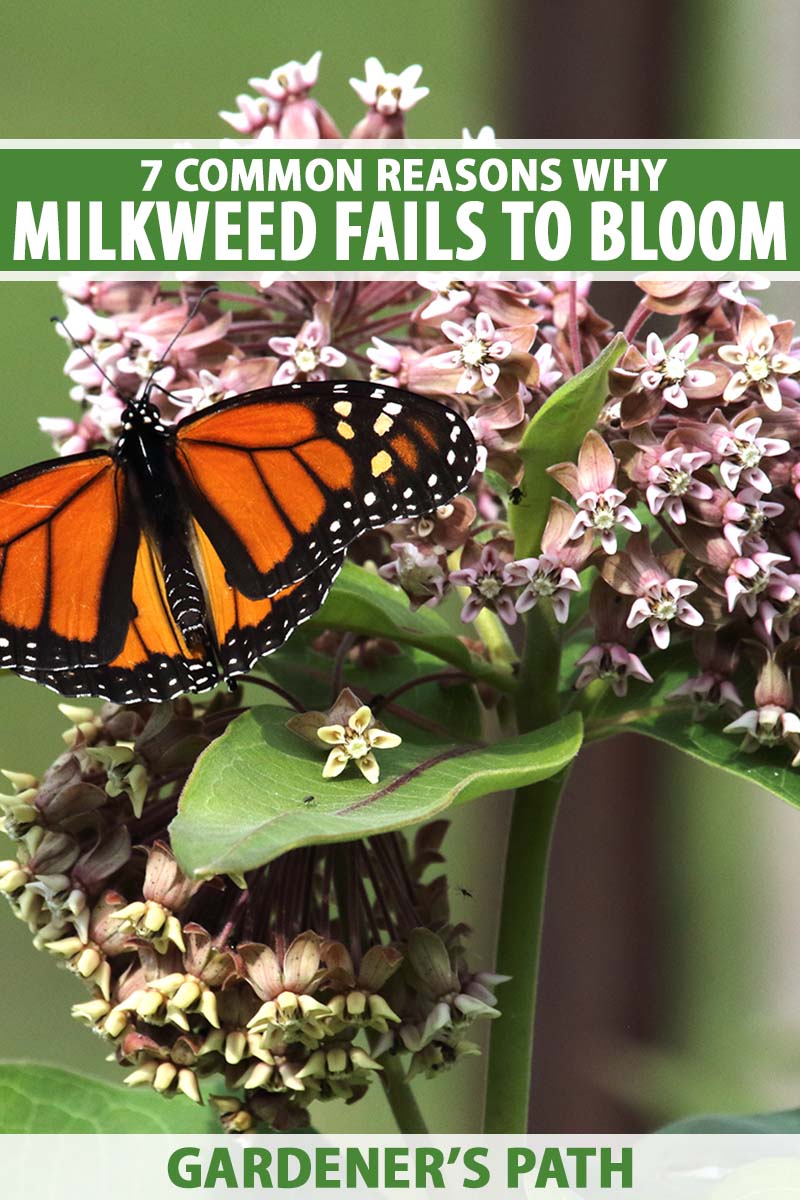
We link to vendors to help you find relevant products. If you buy from one of our links, we may earn a commission.
If you’ve ever examined the flowers up close, they’re positively otherworldly.
The umbels are full of flowers that have five petals that bend back towards the stem, with five modified anthers that project out of the flower like horns.
But the only way you can look closely and enjoy the unique flower structure is if they actually form in the first place. Sometimes that doesn’t happen, and you’re left wondering what on earth happened.
There are lots of reasons and most of them are related to stress. I feel like I can relate.
If it’s any consolation, monarchs don’t care if your Asclepias is flowering. They’ll lay eggs and eat the leaves even if they never bloom.
You also don’t have to worry about the plant reproducing since milkweed can spread underground via the roots and not just through seeds.
Here are the seven most common reasons that milkweeds might not flower that we’re going to explore:
7 Reasons Why Milkweeds Fail to Bloom
If you can’t wait one minute more to solve the mystery of the missing flowers, let’s dive right in with the first cause:
1. Age
While many species reliably flower in their first year, not all Asclepias species will.
Sometimes they will take their first year to build up a strong root system before investing in blossoms.
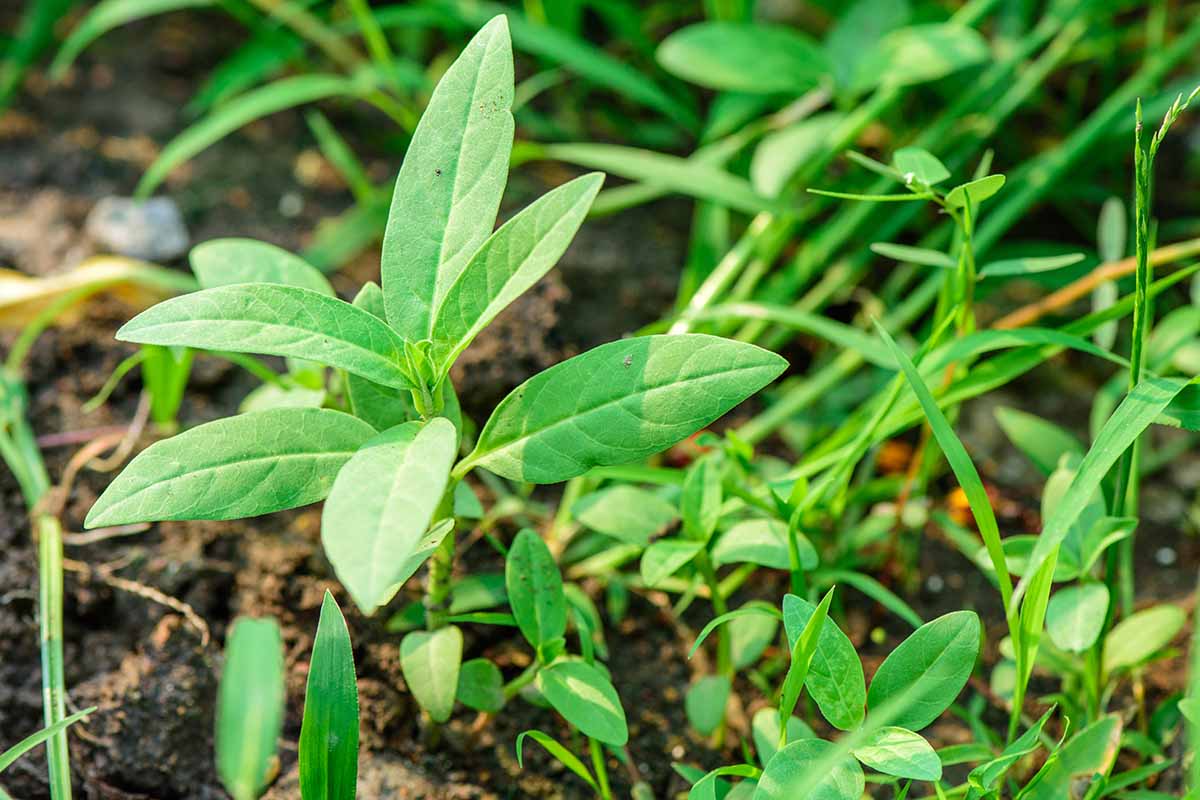
If this is your plant’s first year in the ground, don’t worry if it doesn’t flower.
Continue to support it with appropriate care and you’ll most likely have piles of flowers in the following year.
2. Caterpillar Feeding
Caterpillars are a good and a bad thing with milkweed, right? Some of us grow them specifically to feed monarch caterpillars. But they can devour the developing flower buds.
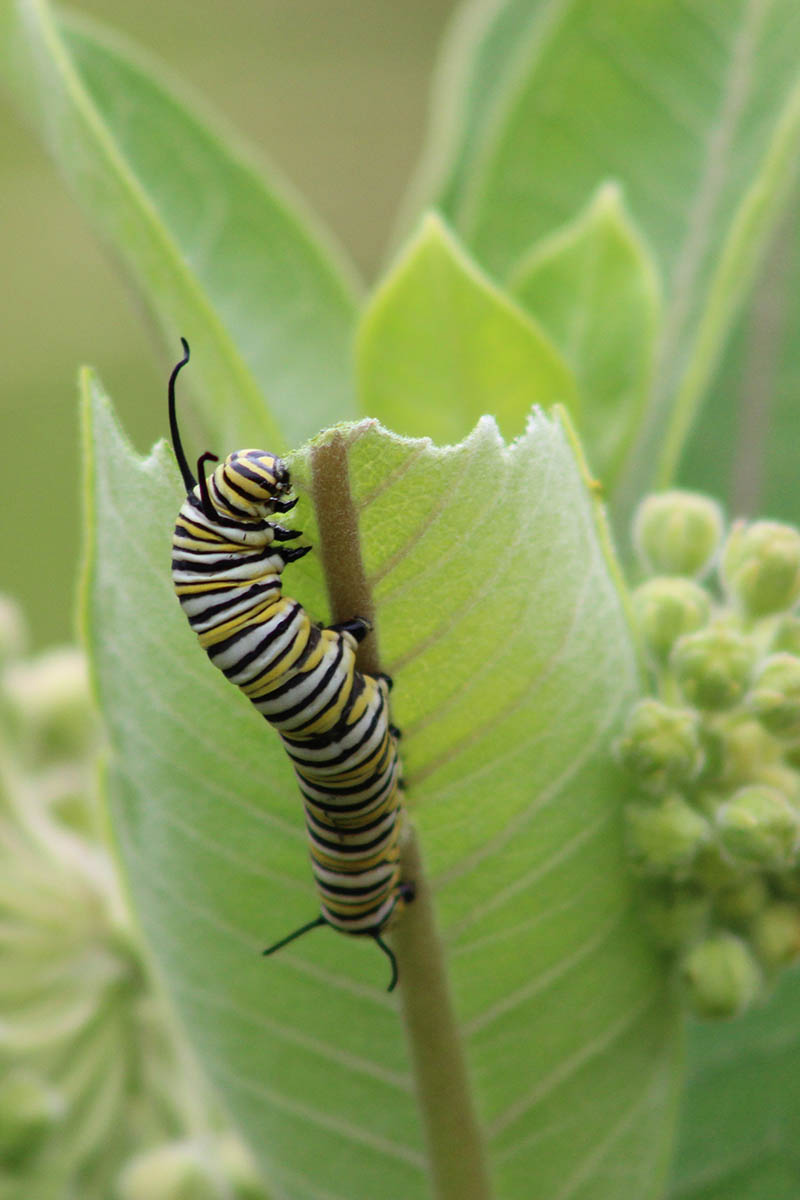
In areas where milkweed grows and develops buds right when caterpillars are feeding, you might lose your buds before they can flower.
In other areas where caterpillars aren’t feeding when the buds are forming, this won’t be a problem.
Monarch caterpillars are large and obvious, so if you see them, look at the end of the stems. Are they blunt, or do you see evidence of feeding? You know what happened…
3. High Temperatures
High temperatures often go hand in hand with drought. But even if your milkweeds are receiving enough water during a heatwave, it might stress the plant enough that it won’t produce blossoms.
This is one of those frustrating problems that you can’t do much about. If you know extreme heat for your region is on the horizon, consider covering your plants with shade cloth and be sure to keep them hydrated.
Even still, heat at the wrong time might stress the plants to the point where any existing buds will shrivel up and new buds won’t develop.
4. It’s Too Early in the Year
Maybe your friend’s showy milkweed (Asclepias speciosa) is in full flower, and your common type (A. syriaca) isn’t showing yet. Don’t stress about it.
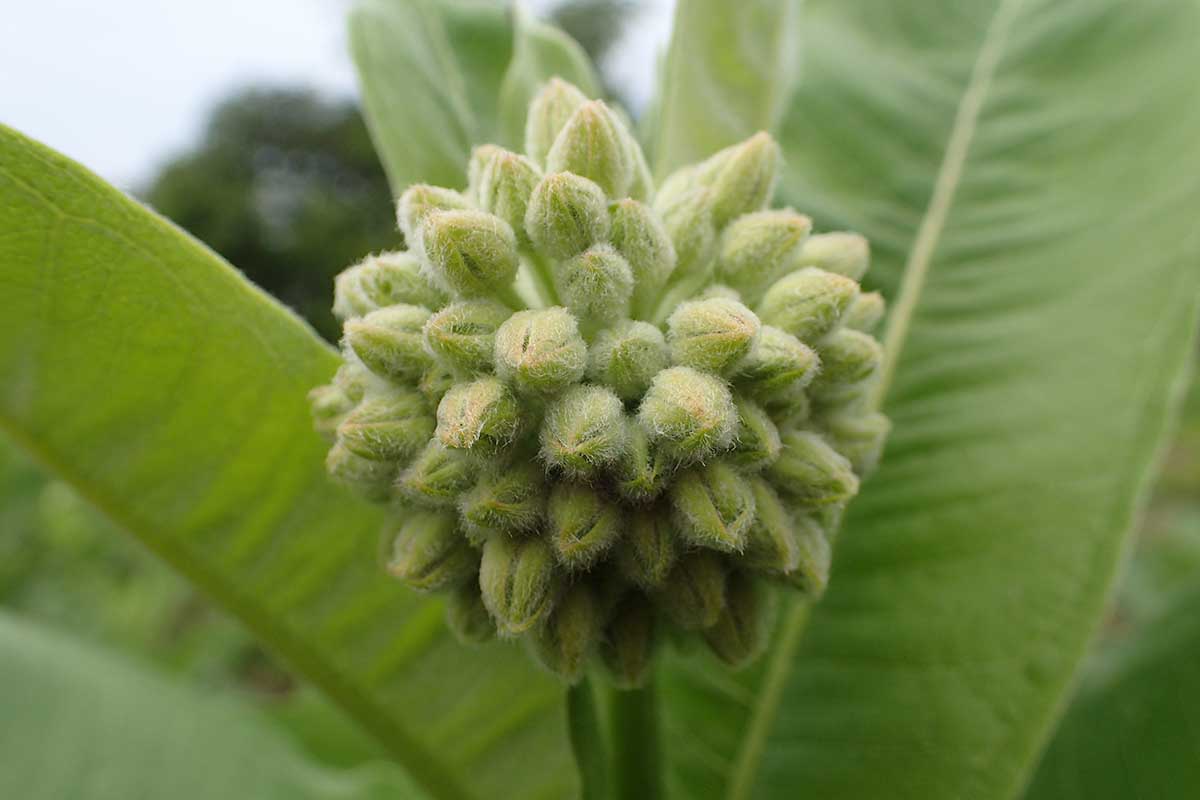
Different species start blooming at different times of year, and that timing can even vary from year to year.
A long winter or rainy spring could delay blooming.
If you don’t see buds getting ready to open by June, it might be time to look at the other causes on this list.
5. Not Enough Water
Although milkweed isn’t greedy about moisture, it still needs plenty of it to thrive. A plant that is stressed will often forgo flowering in order to conserve resources.
The top few inches of soil can dry out with no problem, but if the Asclepias goes too long without water, don’t be surprised if you see fewer blooms, or no blossoms at all.
6. Shade
Milkweed does best when it receives eight hours or more direct sunlight each day.
Anything less and it’s possible that your plant won’t have the resources it needs to develop buds and blossoms.
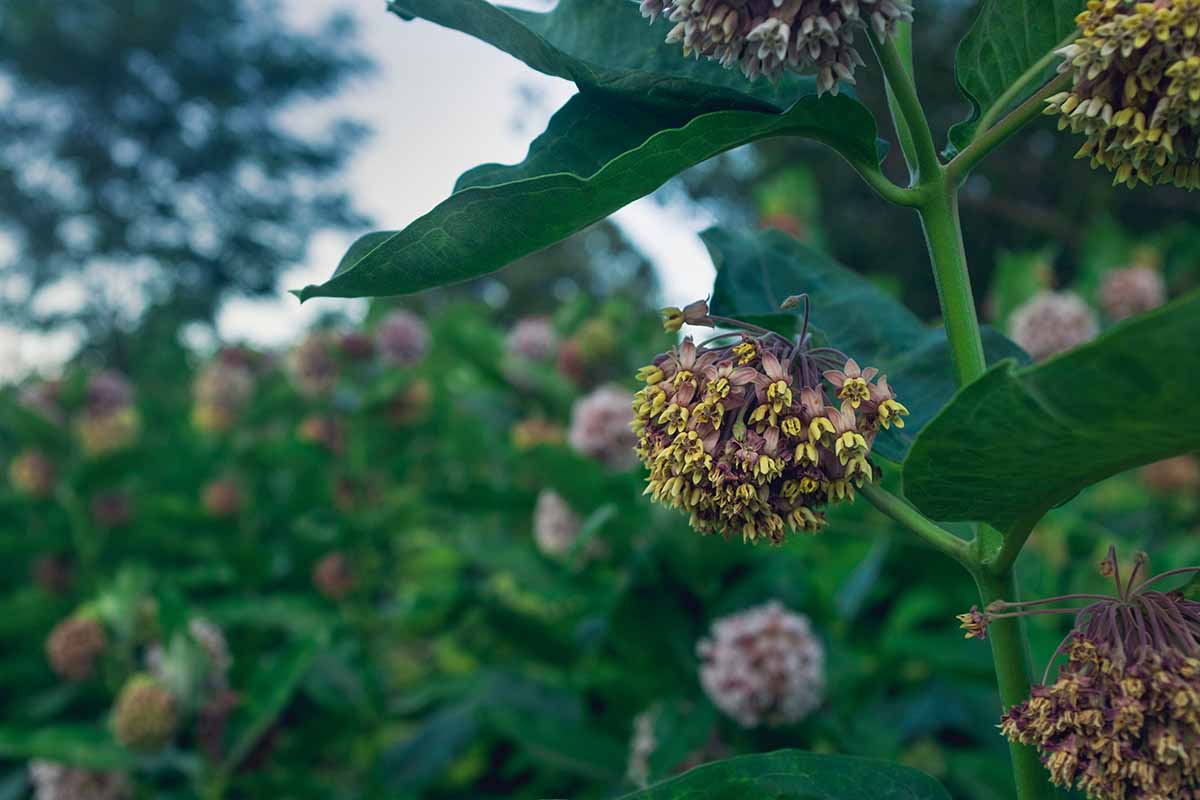
Even if you planted your milkweeds in the correct sunlight exposure, it’s worth doing a double check to see if nearby specimens have grown enough to shade your plants too much.
It’s surprising how fast nearby trees and shrubs can grow!
Or, maybe your neighbor built a second floor on their garage? Or you built a pergola and didn’t notice that it threw shade onto your flowers?
The best way to be sure your plants are receiving enough light is to check once each hour on a sunny day to see what’s going on.
Take notes in your gardening journal. If they don’t have enough light, prune nearby plants or consider moving your Asclepias to a more appropriate spot.
7. Too Much Nitrogen
Many flowers won’t produce if they receive too much nitrogen, and this includes milkweed.
Nitrogen (N) is an essential nutrient that all plants need. They obtain it from the soil as well as from any fertilizer that you add to the soil, or leaves when you mulch.
But too much fertilizer encourages the plant to produce lots of big, healthy foliage – sometimes at the expense of flowering.
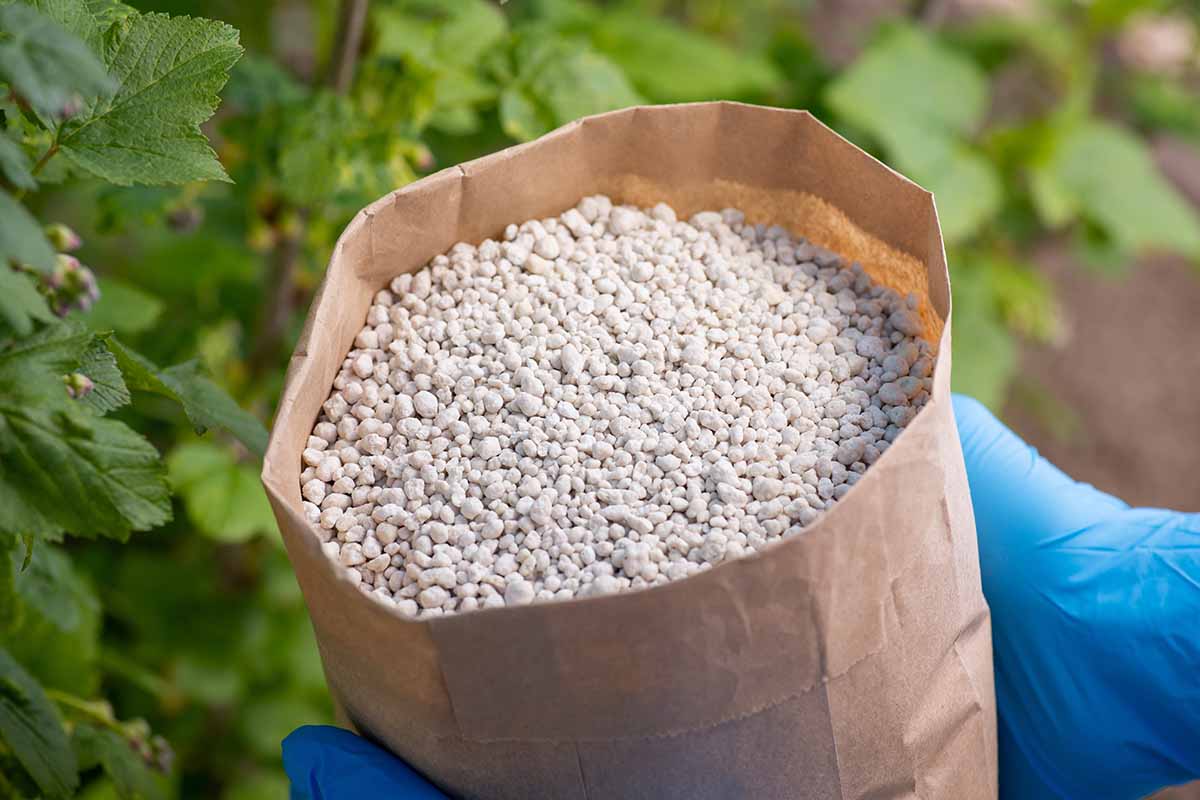
Check your plants out. If they’re over a year old and are big, bushy, and absolutely healthy looking, think over your fertilizer routine.
Most of the time, milkweed doesn’t need any additional food at all.
Consider doing a soil test. If you already have plenty of nitrogen in your soil and you add even a bit more, now your plants are almost certainly getting too much.
There’s another reason not to overfeed: Nitrogen causes the plant to develop toxic cardenolides that can harm monarch caterpillars.
Make Your Milkweeds Shine
Monarchs are struggling as the climate changes and their habitats disappear. So planting certain Asclepias basically makes you a monarch superhero, even if they never flower.
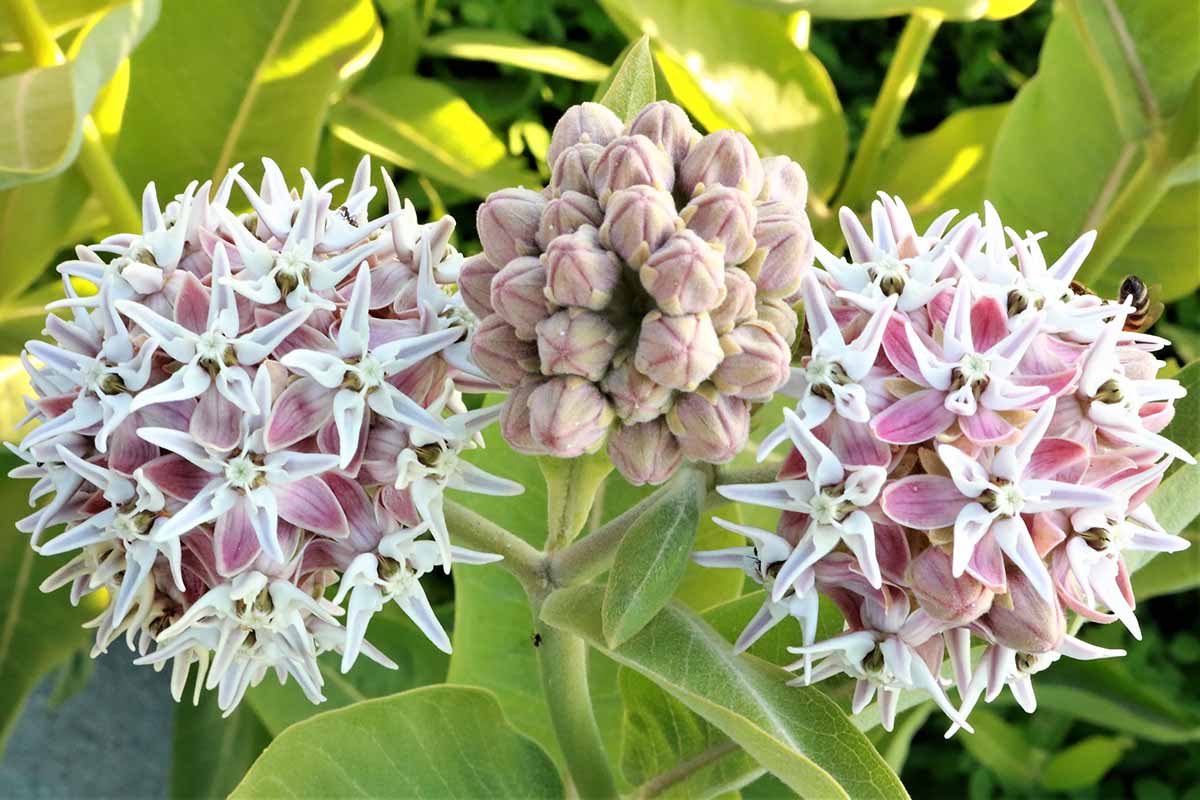
Of course, we want those flowers, especially if butterfly food isn’t your main goal with your milkweeds.
Hopefully you have the knowledge now to figure out what’s going on if your plants aren’t producing all that excellent color.
Are your plants not blooming? Did this guide help you figure out why? Let us know in the comments section below!
And for more information about growing milkweed, check out these guides next:


